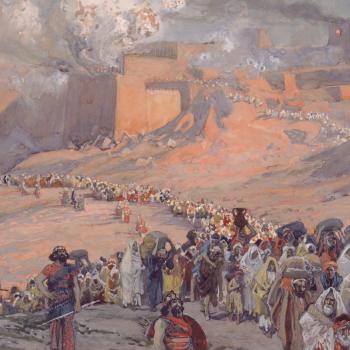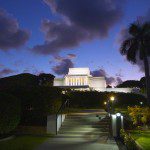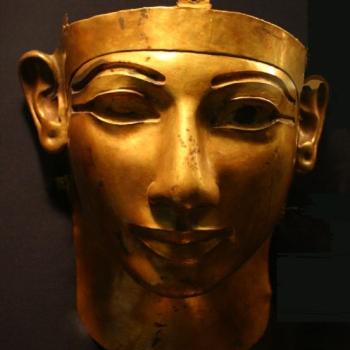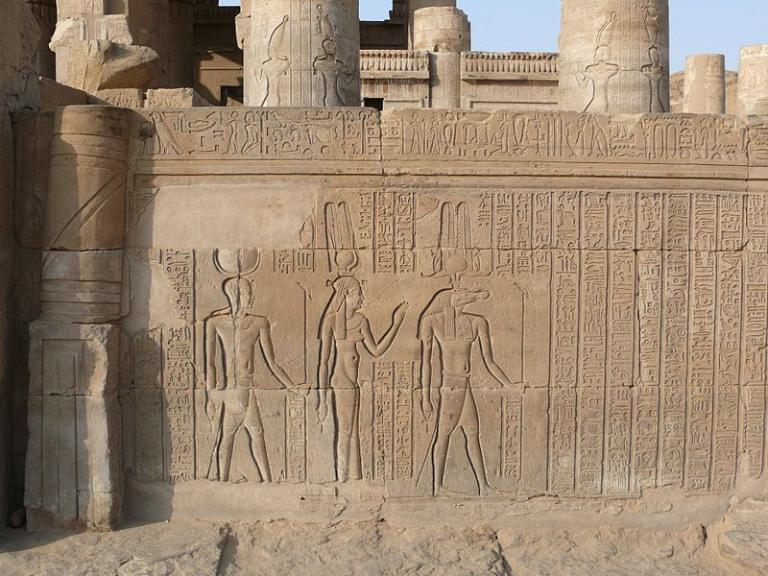
We landed this morning beside the Greco-Roman era double temple of Kom Ombo, which was dedicated to both Horus and the crocodile god Sobek, who appears (accurately identified as “the idolatrous god of Pharaoh, which is probably not the most obvious or immediately intuitive of identifications) as Figure 9 in Facsimile 1 of the Book of Abraham. (For a very brief discussion of Sobek, see my 1994 Ensign article “News from Antiquity.”)
In the afternoon, we landed at Edfu, where we boarded horse carriages for the enormous temple of Horus. It features a wonderfully well-preserved Holy of Holies. After returning from that visit, I held forth on the sun deck of our boat, the Blue Shadow, regarding various topics concerning ancient, medieval, and even modern Egypt. And to think that the people who attended did so voluntarily. Go figure.
At roughly dinnertime, we passed through the lock at Esna, which is always interesting.
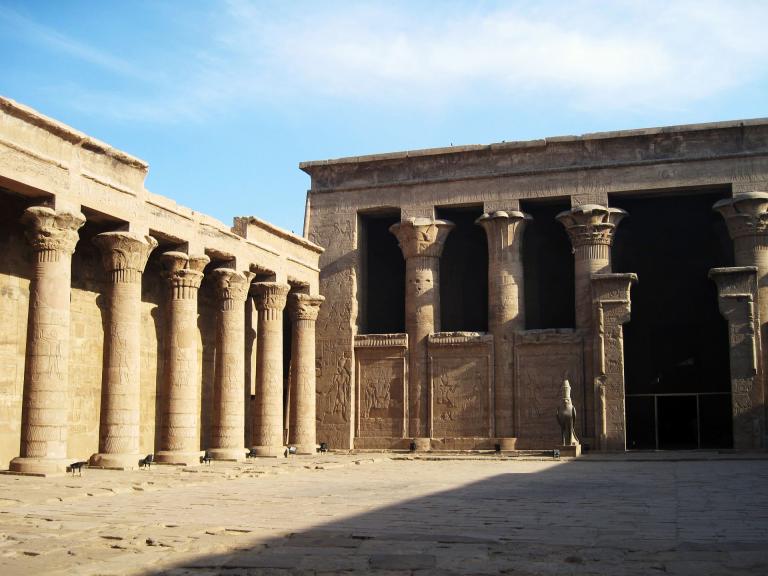
(Wikimedia Commons public domain image)
I return, yet again, to BYU Studies Quarterly 61/4 (2022), which is a special issue of the regular quarterly publication BYU Studies. It was created by four faithful Latter-day Saint Egyptologists — Stephen O. Smoot (Ph.D. candidate, Catholic University of America), John Gee (Ph.D., Yale University), Kerry Muhlestein (Ph.D., University of California at Los Angeles), and John S. Thompson (Ph.D., University of Pennsylvania) — and bears its own unique title: A Guide to the Book of Abraham. As I’ve been saying, it represents something of a state-of-the-question survey from people who are thoroughly familiar with the topic and the issues. I’ve tried to state as clearly as I’m capable of stating it that I am largely quoting bottom-line conclusions. I am not claiming to reproduce the evidence and the arguments on which those bottom-line conclusions are based. For such evidence and arguments you should consult A Guide to the Book of Abraham itself.
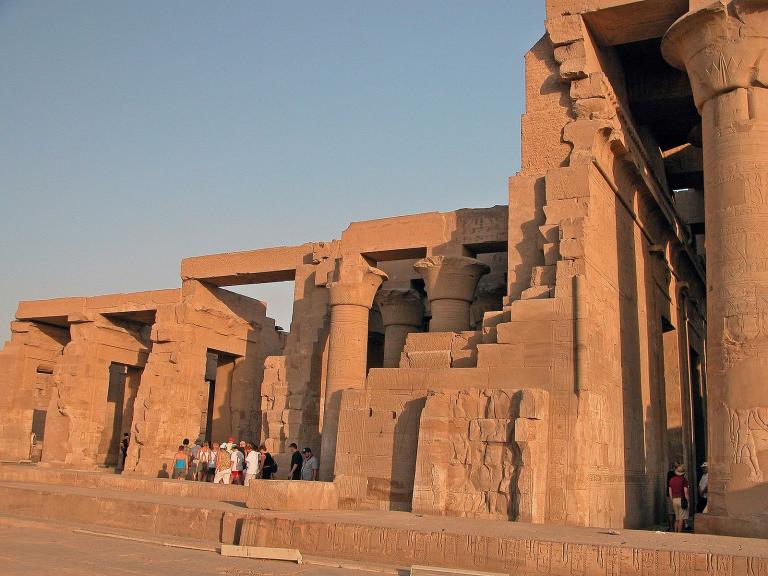
(Wikimedia Commons public domain image)
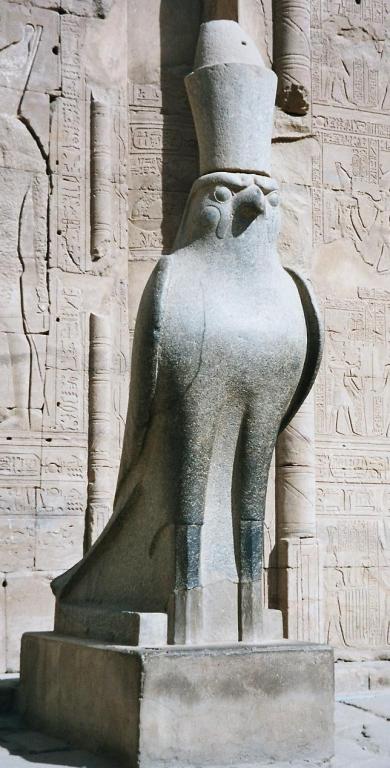
(Wikimedia Commons public domain image)
All that having been explained, I want to look now at some particular passages from BYU Studies Quarterly 61/4 (2022), A Guide to the Book of Abraham:
“Chiasmus in the Book of Abraham,” pages 181-184
Chiasmus, or inverted parallelism, is “a two-part [literary] structure or system in which the second half is a mirror image of the first, [that is,] where the first term recurs last, and the last first.” (181)
A It was conferred upon me
B from the fathers;
C it came down from the fathers, from the beginning of time,
D yea, even from the beginning,
D’ or before the foundation of the earth,
C’ down to the present time, even the right of the firstborn, or the first man, who is Adam, or first father
B’ through the fathers
A’ unto me. (Abraham 1:3, emphasis added) (181)
Another chiasm appears in Abraham 3 that emphasizes the “selection of . . . noble ones as rulers” on earth.
A Now the Lord had shown unto me, Abraham, the intelligences that were organized before the world was,
B and among all these there were many of the noble and great ones;
C And God saw these souls that they were good,
D and he stood in the midst of them,
E and he said: These I will make my rulers;
D’ for he stood among those that were spirits,
C’ and he saw that they were good;
B’ and he said unto me: Abraham, thou art one of them;
A’ thou wast chosen before thou wast born. (Abraham 3:22-23, emphasis added). (182)
What makes the presence of literary parallelism in the Book of Abraham significant besides being evidence for a “tight and deliberate literary structure” of the text is that this type of literary device is “an unmistakable feature” of ancient Egyptian literature. (182)
[Examples are given from the Stela of Sobk-Iry, from the Story of Sinuhe and the Story of the Shipwrecked Sailor, all of them dating from roughly the time of Abraham, 182-184)]
Since Abraham was not writing Egyptian literature for an Egyptian audience, the significance of ancient Egyptian texts and the Book of Abraham sharing common literary features like chiasmus and parallelism is noteworthy but should not be overstated. It seems that since Abraham was probably writing to those of his Semitic culture, the presence of chiasmus in the Book of Abraham demonstrates the prevalence of this literary feature in the ancient world generally, including Abraham’s own culture, and can be viewed as a marker of the text’s ancient origin. The presence of chiasmus in the Book of Abraham is therefore consistent with expectations that the text bears a high degree of historicity and reinforces both its overall credibility and literary quality. (184)
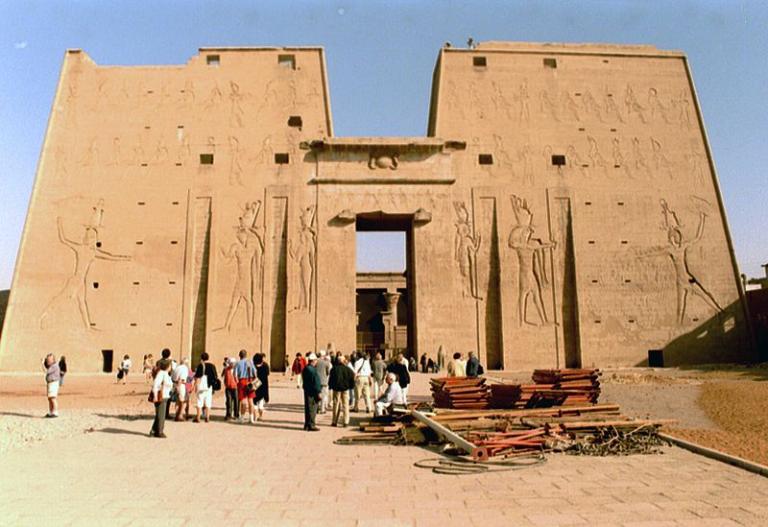
(Wikimedia Commons public domain image.)
“Egyptianisms in the Book of Abraham,” pages 185-188
One way of determining whether the Book of Abraham is a translation of an underlying Egyptian document or whether it was originally composed in English is to see if the text contains what might be called Egyptianisms, or literary and linguistic features of the Egyptian language. The presence of Egyptianisms in the text of the Book of Abraham “might indicate some knowledge of Egyptian on Joseph Smith’s part. Because “Egyptian was not really understood in Joseph Smith’s day,” any knowledge of Egyptian Joseph Smith may have possessed could only have come by revelation. (185)
While these Egyptianisms in the Book of Abraham do not indisputably prove that Joseph Smith was translating from ancient Egyptian, they are consistent with his claims to have done so. (188)
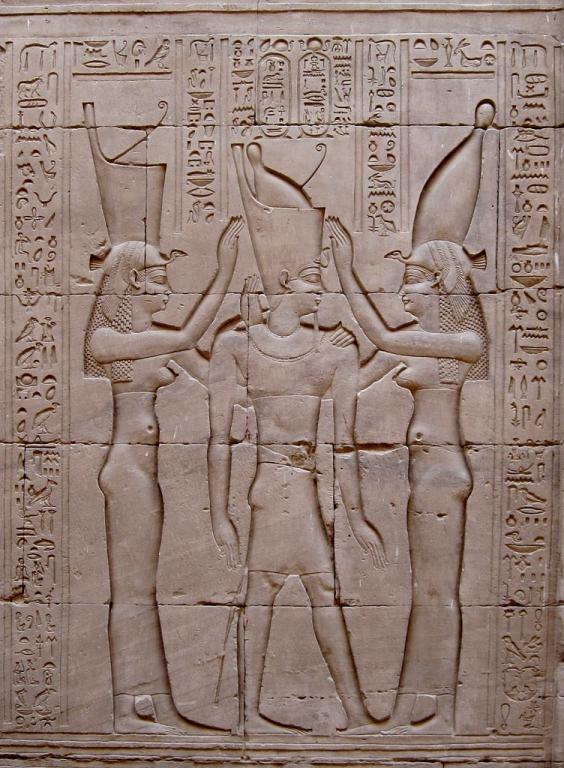
(Wikimedia Commons public domain image)
“Jews in Ancient Egypt,” pages 189-192
[Jews were present in Egypt through just about its entire history, thus providing a potential chain of transmitters.]
So even though Abraham would have written his record many centuries earlier, there is plenty of historical evidence to suggest a plausible way in which those writings could have been transmitted into Egypt at any point over the course of many centuries. (191)
Posted from the River Nile, just north of Esna




